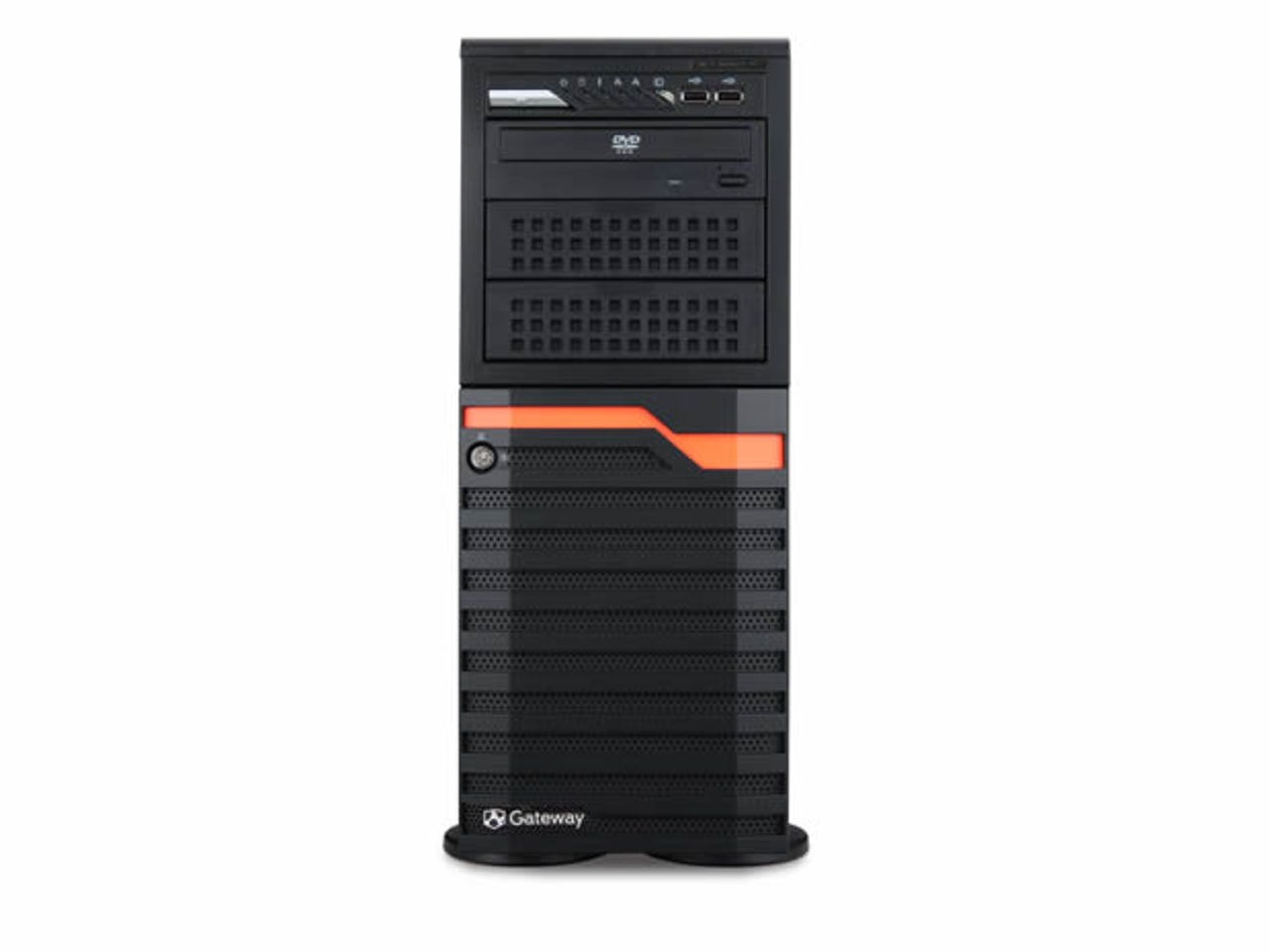Gateway GT350 F1


Gateway GT350 F1
Once one of America's best-known brands, Gateway 2000 and its black-and-white cow-pattern boxes succumbed to consolidation some time ago. Nowadays, Gateway is the business arm of Acer. Typical of Gateway's new-look product range is the GT350 F1, a flexible server platform for companies seeking a scalable mid-range solution from a vendor that isn't HP, Dell or IBM.
Something of a rarity in a market dominated by rack-mount and blade servers, the GT350 F1 is a dual-socket tower server, built on conventional lines. However, there is an optional 4U rack-mount kit should the temptation to lock it away in a corporate datacentre prove irresistible.
The Gateway GT350 F1's tower format provides plenty of space for hard drive expansion; an optional 4U rack-mount kit is also available
The tower format, of course, has pros and cons. It provides lots of space for expansion but, if that space isn't utilised, is a lot bulkier than it need be. Still, the GT 350 F1 has a lot to offer, including a well-built chassis with the option of redundant, Energy Star-rated power supplies and fans that can be hot-swapped without opening the case. There are still fans inside that might, conceivably, also need changing so it's not fool-proof.
The system's single highly integrated motherboard has sockets to accommodate two Xeon 5500/5600 (45nm/32nm Nehalem) processors with a wide selection of dual-, quad- and six-core implementations to choose from. Our review system came with a relatively modest quad-core 2.13GHz Xeon E5506 installed which, if nothing else, helps to keep costs down. Most customers, however, are likely to opt for a dual-CPU setup right from the start and choose faster processors, most probably those with Intel's Turbo Boost and Hyper-Threading technologies on-board, to get the maximum benefit from their investment.
Similarly, it's unlikely that many will stick with the 6GB of EEC-protected DDR3 RAM provided on the base configuration we tested. There's plenty of scope to upgrade, with 18 DIMM slots that can accommodate up to 192GB to cope with large databases and other memory-hungry applications. Of course that's going to boost the price well beyond the £1,000 or so quoted here; it's also worth getting specialist help with the configuration, because selecting the right processors and RAM for the particular applications you want to support can be something of a black art these days.
Unlike space-constrained rack systems, the GT350 has plenty for room for internal storage. Up to 16TB in fact, spread across either eight 3.5in. or sixteen 2.5in. drives, all of which can be hot-plugged into bays easily accessible behind a hinged and lockable front door. An integrated Intel storage controller is on hand to manage that storage, with support for RAID 0, 1, 5 and 10 arrays. However, the built-in interface is SATA-only and limited to relatively small arrays which means having to plug in extra adapters to cope with further disks or to support SAS drives.
Inside the GT350 there are DIMM and PCI slots aplenty
Fortunately that's quite easy, with five PCI Express slots to play with, making it possible to add both extra host bus adapters and additional LAN cards, should the integrated dual Gigabit ports prove insufficient. Remote management comes as standard, with a separate Ethernet port to support it.
There's very little to complain about in the Gateway hardware, and no reason for potential buyers to head for one of the better-known alternatives. It's not possible to boot the server into an embedded hypervisor, but few customers will buy this server to host large numbers of virtual machines so that's unlikely to be an issue. Nor do you get anything like the integrated Lifecycle Controller now built into some Dell servers, but then nobody else does those either so it's hardly a deal-breaker.
On the downside, Gateway resellers are harder to track down compared to those selling the leading brands and, unlike Dell, you can't buy Gateway hardware direct. Still, resellers there are, and buying through the channel brings additional benefits, including the option of having an operating system both installed and configured for you. To this end Gateway recently released an integration kit in collaboration with Microsoft to get the best out of its hardware as a Windows platform. There's also full support for Red Hat Enterprise Linux, with specialist resellers able to provide additional services on top of the two-year on-site warranty included to cover the hardware.
The Gateway GT350 F1 isn't an awe-inspiring server in terms of how it can be configured, and it's not a great deal cheaper than equivalent setups from the big-name vendors. Having said that, it's competitive on both price and configurability, and can be put to a variety of uses — anything from a general-purpose small business server to more specialist roles hosting web and database applications in larger organisations. Gateway is also part of the Acer group, and that's about as big as they come.